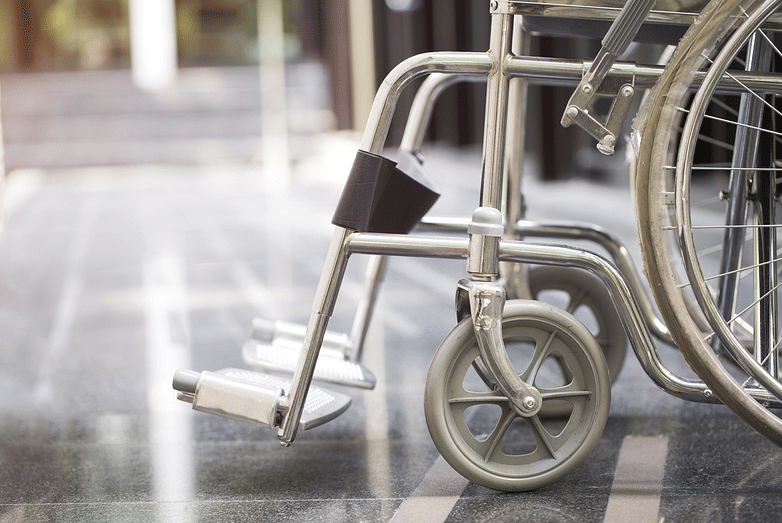If you stay in your wheelchair while riding in a vehicle it’s important that your chair is up to standards regarding WC 19 certification. A wheelchair that does not meet these standards presents a greater risk for injury and even death in an accident. A vehicle chair is always safer than a wheelchair, but some patients are unable to transfer into an automobile seat. In which case, the following regulations help keep wheelchair patients as safe as possible.
Wheelchair Transportation Safety Standards
There are strict safety standards administered by both national and international groups. The Rehabilitation Engineering and Assistive Technology Society of North America (RESNA) and the American National Standards Institute (ANSI) collaborated to create a set of standards that make a wheelchair suitable and safe for transportation in vehicles. The International Standards Organization (ISO) has mandated a similar set of standards for wheelchairs around the world.
These safety standards include:
-Wheelchairs used for transportation in vehicles should be WC 19-compliant.
-WC 19 chairs must be made to withstand a 30-mph collision while sustaining little to no damage.
-WC 19 compliant chairs must be equipped with four securement points (at least) that are easy to identify and can be secured to tiedown straps using just one hand.
-There are a number of standards regarding the strength, durability and materials that tie down straps are made from. The overall design of the straps is also key in order to decrease the risk of injury during a crash.
Manufacturers are not required to uphold these standards. Instead, they are simply recommendations. It’s up to you to find the right wheelchair that does uphold these standards if you plan to use your chair as a seat in a motor vehicle.
What Is A WC 19 Compliant Wheelchair?
If you see the WC 19 logo on your wheelchair it means that the manufacturer has designed your particular chair to be used as a seat in a vehicle. Prior to the development of WC 19 chairs, manufactures warned people not to use their chairs as seats in a car. In some cases, just because you see the logo on your chair doesn’t mean it is necessarily built to the safety standards necessary to safely double as a seat in a van. It’s always best to directly ask the manufacturer or specify that you need a WC 19 chair at the time of ordering.
WC 19 compliant wheelchairs are made to work with 4-point tie downs. The 4 or more securement points are clearly labeled on these chairs so that it is easy to read and recognize where they are. These chairs have also been through standardized crash or sled tests and successfully survived with little to no damage. These chairs have proven capable of withstanding up to 20-g change in velocity, or a crash at 30-mph. These are the same standards that any automotive equipment must comply with.
You can see a full list of WC 19 compliant wheelchairs here: http://wc-transportation-safety.umtri.umich.edu/crash-tested-product-lists/wheelchairs
What If Your Chair Is NOT WC 19 Compliant?
If you are using a chair that is not compliant with WC 19 regulations as a seat in a car you should:
-Sit facing towards the front half of the van.
-Make sure that at least 4 securement straps are properly attached to your chair.
-Don’t forget about the 3-point vehicle-mounted occupant restraint.
Remove Accessories & Mounted Equipment
Even if you have a WC 19 wheelchair, the accessories and mounted equipment added onto your chair has not been tested or approved for crash safety. Making any after market modifications to your chair could also invalidate its vehicle safety status. You should always remove lap trays, augmentative communication devices or anything else that is attached to or mounted on your chair prior to going for a ride.
Wheelchair Tiedown & Occupant Restraint Systems
All public transportation and privately owned handicapped vans should be equipped with the tiedown straps or crash-tested docking system necessary to secure wheelchairs in place. While it takes a few minutes to properly secure a wheelchair, never let anyone make you feel bad about this and risk not strapping down your chair. This is your safety we are talking about and anyone that wants to jeopardize that just to save a couple minutes should be 100% ignored. This is an especially pressing problem on public buses where mass amounts of people are all in a hurry.
Wheelchair occupant restraint systems are equally important and should be used in conjunction with tiedown straps. They are not intended to support the weight of the crash, but instead provide postural support.
The Proper Belt Fit
Your belt must be properly secured and fit to your body in order to protect you during an accident and ensure utmost comfort. Belts do not fit all shapes, sizes and wheelchairs, and often require adjustment in order to fit correctly. A safety belt should fit low across your pelvis, just above the point where your thighs and abdomen meet. The shoulder belt should reach up and across the center of your shoulder.
The Stellar Choice In Wheelchair Transportation
When you book local or long distance non-emergency medical transportation with Stellar Transportation you can rest assured you are in the best hands possible. We vow to follow all of the latest safety regulations and then some, ensuring the safest and most comfortable ride in Melbourne and beyond!

